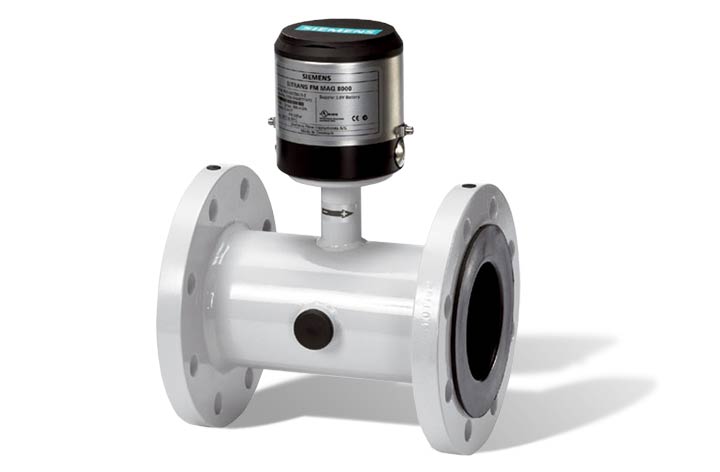These meters measure the flow rate of dirty and thick liquids as well. Liquid flow sensors come in different types and work differently. Liquid flow sensors are used in different applications. The applications include; natural sources, pipes, chambers, tanks, and more. Always be careful when selecting flow sensors for your application. And again, make sure to use them for the right application.
Flow Meter Types and Its Advantages
Paddlewheel Sensors

The paddlewheel is the most popular liquid flow sensor because it is cost-effective. These meters are mostly sold with insertion and flow fittings. Also, they need ten diameters of straight pipe on the inlet. And even five pipe diameters on the outlet.
This meter has a rotor that is fitted perpendicular to the flow rate. Paddlewheel sensors are mostly used for water and water-like liquids. They are cost-effective, and their accuracy level is also high.
Advantages of Paddlewheel Sensors
These meters have low cost and high accuracy levels
They are easily installed, and operating them is easy
Paddlewheel sensors do not have pressure drops. Making them the best for gravity flows
The installation and maintenance of these meters are low because of their design.
Venturi Flow Sensors

Venturi tubes measure the flow of a large volume of fluids with low-pressure drops. These sensors are also used to measure the flow of liquids in a straight pipe. When using venturi meters, the flow of liquids increases over the joining cone.
Venturi meters have a better pressure recovery compared to the orifice plate sensors. Their pressure loss is low and measures clean, dirty, and thick fluids. They have high pressure and energy recovery, which makes them fit for small-pressure applications.
Advantages of Venturi Flow Sensors
The pressure drop of the venturi meter is low, and it is easy to handle. They are also for dirty fluids, and their accuracy levels are high.
Coriolis Flow Sensors

Coriolis flow sensors measure flow using Newton’s second law of motion. The law says that force equals the mass of the fluid multiplied by the increase. These meters measure the fluid’s group and are not sensitive to the liquid’s temperature or pressure. Coriolis flowmeters are popular due to their high accuracy level and are the best among all meters. Coriolis sensors measure liquids, gases, and steam.
Advantages of Coriolis Sensors
These measure the accurate mass of the fluids
These meters are popular, and their accuracy levels are high
They are also used to measure the density of the fluid
Coriolis flow sensors are not affected by pressure, temperature, or thickness of the liquid
You will not need inlet or outlet parts to use these meters
These meters work in both forward and reverse directions
Orifice Plate Flow Sensors

These meters are one of the most popular meters in the market. They have a hole in them that is put in the flow channel. This hole narrows the flow, measures the pipe’s pressure difference, and gives the flow rate.
The orifice plate is more popular because they are easy to use and simple as well. These meters are used to measure clean fluids, gases, and steam. You can use these meters to measure the flow rate in a channel. The orifice plate Present in the tube generates pressure proportional to the rate of the flow of the liquid.
Advantages of Orifice Plate Sensors
These meters are cheap and easy to use
They measure clean liquids, gases, and steam
This Orifice meters are also used to measure the flow of thick fluids
Ultrasonic Flow Sensors

Ultrasonic meters are used to measure solids, liquids, gases, and they utilize the waves’ property to measure the flow rate. To find the flow rate, an ultrasonic signal is sent to the tube at a certain angle. The time taken by the call to reach one side of the meters is then determined.
The time taken by the fluid to move across the pipe in a reverse direction is directly related to the flow rate.
Advantages of Ultrasonic Flow Meters
Ultrasonic flow sensors have no moving parts. Therefore, they do not wear or tear, which makes them easy to maintain.
They do not have pressure drops.
They are perfect for corrosive fluids.
Ultrasonic work using both forward and backward flow directions
Tmeters are not affected by either temperature, density, and concentration of fluids.
It easy to install, but they require adjustment.
Vortex Sensors

Vortex sensors are also known as oscillatory meters. They work using a natural experience when a liquid passes in a mock object. The speed of this meter is directly related to the energy of the fluid flowing. Vortex meters are mostly used to measure the flow rate of the steam.
Advantages of Vortex Sensors
Moving parts are not present in the vortex meter
They are perfect for liquids, gases, and steam
These meters are easy to clean
It can be affected by temperature, pressure, and changes in density
Electromagnetic Flow Sensors

Magnetic sensors are popular sensors that operate using Faraday’s law. The law says that energy is created when the fluid moves through a magnetic field. The EMF generated directly depends on the speed of the liquid flow. Magnetic meters have two electrodes fixed to the walls of the pipe to find the point. Electromagnetic liquid flow sensors do not have moving parts. So, they are perfect for corrosive fluids because they do not wear. They also measure dirty liquids.
Advantages of Electromagnetic Meters
They have no moving parts
These meters do not have added pressure drops
The flow profile of electromagnetic sensors is usually not sensitive. You will only need short inlets and outlets
Changes in pressure, temperature, and thickness do not affect these meters
They are easy to maintain as well
Conclusion
Liquid flow sensors come in different types, and their uses are also different. When selecting a meter for your application, consider some things. These things are the meter’s accuracy and repeatability. Also, make sure to always seek advice from the sellers. They will advise you on the right meter.


